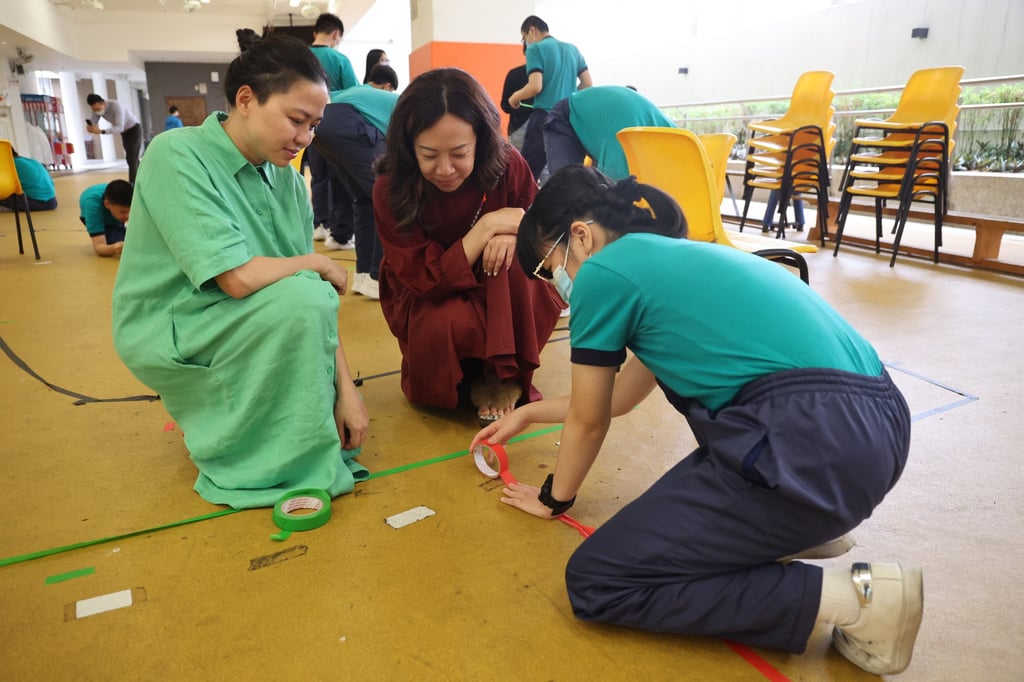Advertisement
How to tap special educational needs students’ creativity? Hong Kong SEN teens team up with artists for unique perspectives
- Artist collective Hass Lab works with Hong Kong schools to achieve more inclusivity and celebrate the creative strengths of SEN students
- The long-term goal is to link up with a commercial creative firm so that SEN students continue to be supported when they leave the school system
Reading Time:4 minutes
Why you can trust SCMP
0

It’s a Friday afternoon in Cheung Sha Wan, in Hong Kong’s Kowloon area, and a group of teenagers are absorbed in an intricate game of world-building.
First, each builds their own “home”, wrapping strips of coloured tape around chairs.
All the structures are different, and no one is looking over their shoulder to see what anyone else is doing. Then, taking their lead from artist Kevin Ling, they connect the structures together.
“What’s this? A road?” Ling says.
“No! It’s the MTR,” insist the teens, referring to Hong Kong’s public rail network. And they show him how the tape – representing a rail line – connects the homes.

Ling steps back as the teens put the finishing touches on their multicoloured village.
Advertisement